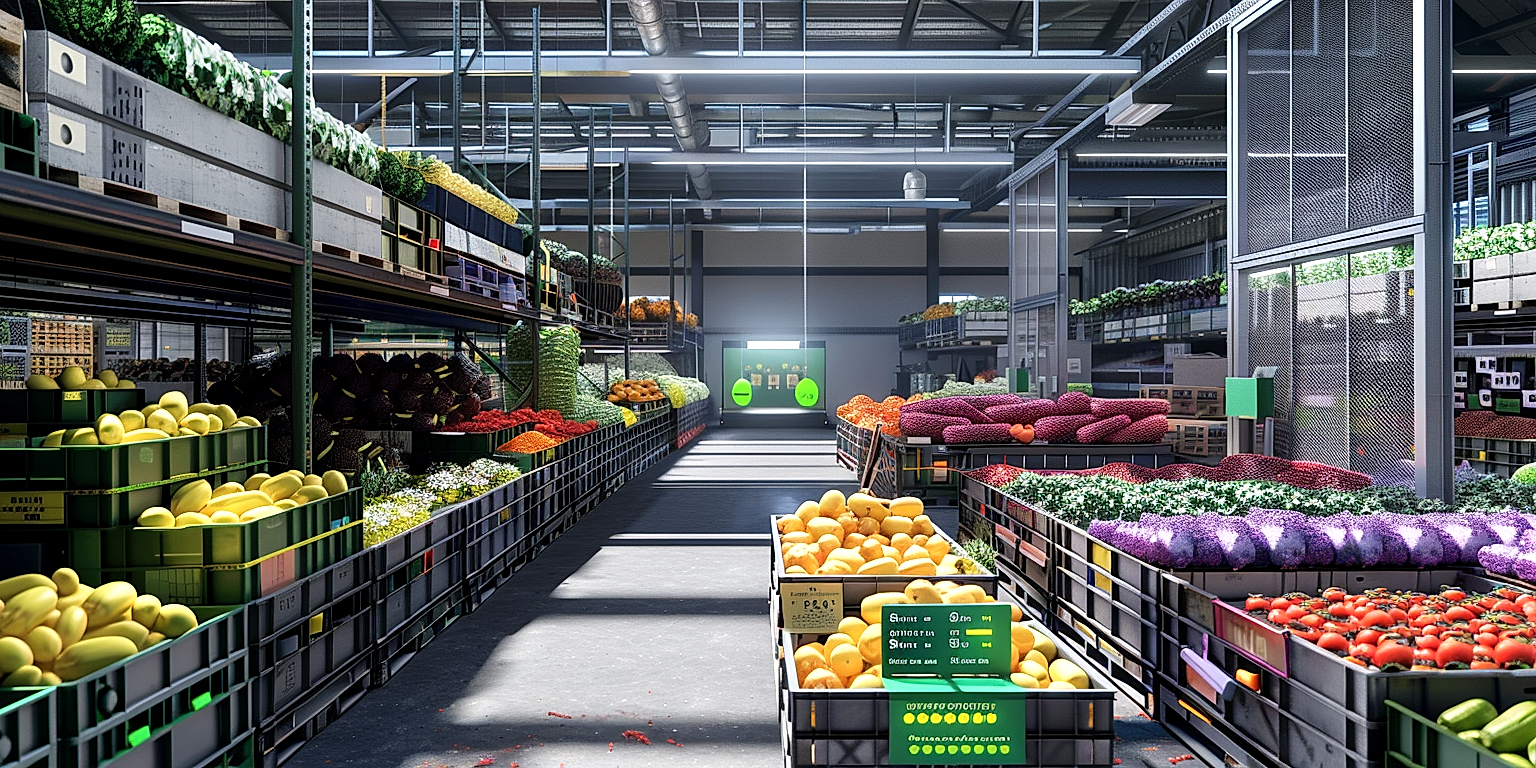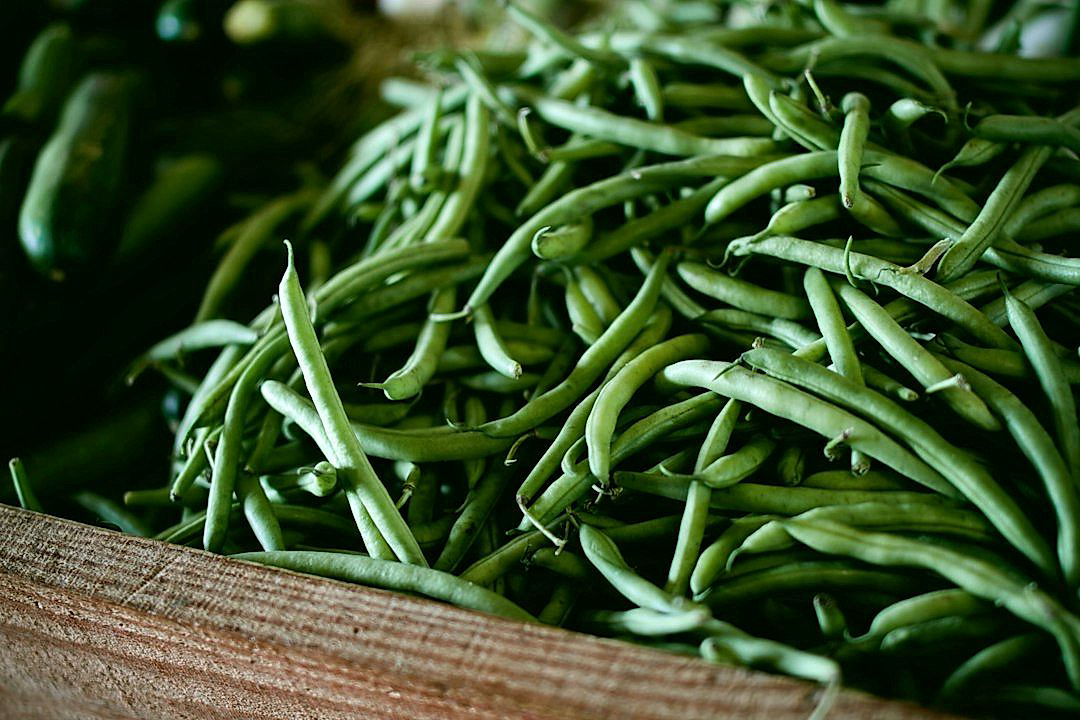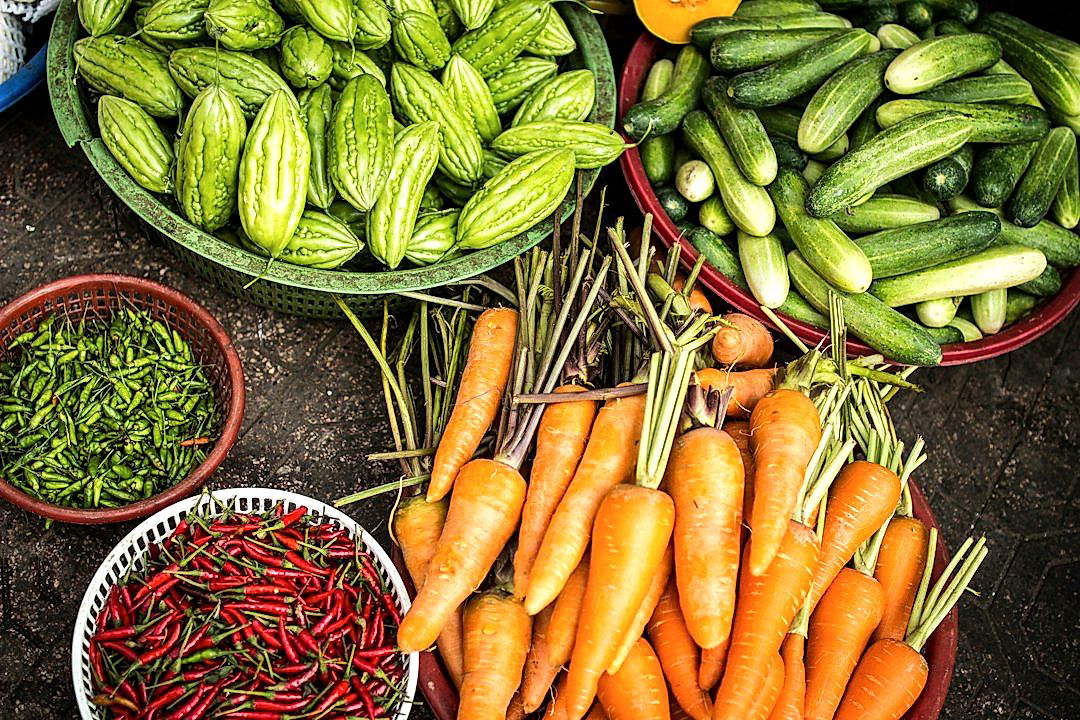The process of moving fruits and vegetables from the field to the consumers’ plates presents a unique set of difficulties.
An intricate interweaving of numerous components, supply chains in the produce industry must contend with volatile market conditions, fluctuating demands and logistical complexities.
More than that, they are challenged by the perishable nature of their commodities which necessitates expeditious but careful handling.
Addressing these challenges is of utmost importance to maintain the quality of the products and the profitability of the businesses involved.
This blog aims to dissect some of these challenges and, significantly, to proffer potential solutions to navigate such difficulties.
By doing so, we hope to provide insights for industry players and stakeholders to foster a more sustainable, resilient, and efficient produce processing supply chain.
Contents
- Challenges & Solutions For Supply Chains In Produce Processing
- 1. Challenge: Inadequate raw material supply
- 1. Challenge: Inadequate raw material supply – Solution: Diversify suppliers
- 3. Challenge: Inconsistent Product Quality
- 4. Challenge: Limited storage capacity
- 2. Limited storage capacity: Optimize warehouse management
- 6. Challenge: Excess waste production
- 7. Challenge: Inconsistent Product Quality
- The Bottom Line
Challenges & Solutions For Supply Chains In Produce Processing
1. Challenge: Inadequate raw material supply
Ensuring a consistent and quality flow of raw materials is a crucial foundation for any successful produce processing operation.
When there is an inadequate supply of raw materials, it can disrupt the entire production process, putting the company’s efficiency and effectiveness at stake.
This problem can arise due to a variety of reasons, such as poor crop yield, transport disruptions, supplier unreliability, or sudden price increases.
Disruptions in raw material supply can lead to significant production downtime, causing operational inefficiency and financial loss.
Having an inadequate raw material supply not only threatens the process flow, but also poses a risk to the business’s reputation and customer relationships.
In the produce processing industry, timing is everything – any delay can lead to spoilage and waste, impacting the quality of the final product.
Moreover, these delays can lead to missed deadlines and unfulfilled contracts, damaging relationships with buyers and affecting future business.
In the face of such challenges, it becomes imperative for businesses in produce processing to devise strategic solutions to mitigate these problems.
One such solution is to diversify suppliers, which can be a strategic move in the long run.
This approach ensures that your business doesn’t rely on a single supplier, thus reducing the risk of sudden disruptions.
Having multiple suppliers allows for a continuous flow of raw materials, even if one supplier experiences issues.
Diversification of suppliers not only provides a safety net for your supply, but also gives the option to compare prices and quality, ensuring the best value for your business.
However, implementing this solution requires careful planning and management to balance supply and demand effectively.
Businesses must establish strong relationships with various suppliers, coordinate logistics and ensure compliance with quality standards.
Implementing a diversified supplier strategy is not without its challenges, but with careful management, it can provide a robust solution to the challenge of inadequate raw material supplies.
1. Challenge: Inadequate raw material supply – Solution: Diversify suppliers
One of the most pressing challenges faced by produce processing supply chains is the inadequacy of raw material supply.
This concern arises from a dependence on a single or few suppliers, leading to potential disruptions in the chain if these suppliers are unable to meet demand.
Such disruptions could be as a result of a myriad of issues, such as production problems, labor strikes, climatic changes, or transportation difficulties, which could severely affect the suppliers’ ability to supply enough raw material for processing.
The solution to this problem comes in the form of supplier diversification, a strategic move that mitigates the risk of raw material inadequacy.
Diversifying suppliers encourages the sourcing of materials from a broad base of suppliers, which helps to balance the risk associated with relying on a single supplier.
The primary advantage of this approach is it allows businesses to navigate supply disruptions from one supplier by leveraging their relationships with others.
Consequently, it is important to evaluate potential suppliers based on their reliability, quality of goods, delivery speed, and other essential parameters.
Supplier diversification not only assures constant raw material supply but also negotiates better terms and prices from suppliers due to increased competition.
It is crucial, however, that businesses do not compromise on quality in an effort to diversify their supplier base.
Regular audits and quality inspections should be carried out to ensure that all suppliers meet the required quality standards.
Moreover, a diversified supplier base can be more adaptable to changing market conditions, thereby ensuring that materials supply is not heavily impacted by economic fluctuations.
The process of supplier diversification is not a one-time task; it should be continuously reviewed and optimized, meaning businesses should always be on the lookout for potential suppliers who can add value to their supply chain.
Having a wide array of suppliers enhances the resilience of the supply chain and increases its ability to handle unexpected shocks and disruptions.
Communication is a key part of this strategy; maintaining open and collaborative relationships with suppliers allows businesses to address any potential issues promptly and efficiently.
Overall, the benefits of supplier diversification far outweigh the potential drawbacks, making it a vital strategy in addressing the challenge of inadequate raw material supply in produce processing supply chains.
3. Challenge: Inconsistent Product Quality
The inconsistency in product quality is a major challenge that supply chains in produce processing sectors often face.
It is a critical issue that can significantly harm the efficiency and reputation of a business if not adequately managed.
A company’s reputation is judged upon the quality of its product and the consistency of this quality, therefore, it is an issue that cannot be ignored.
Why is product quality inconsistency a significant concern in produce processing? Primely because inconsistent product quality can lead to customer dissatisfaction, loss of trust, and eventually to a decline in sales.
Many contributing factors can lead to general inconsistency in product quality. This includes inadequately trained staff, poor quality control systems, inefficient machinery, or irregularities in raw materials.
To mitigate the risk and impact of product quality inconsistency, it is essential to have robust quality control mechanisms in place.
The primary solution to combat this challenge is by implementing strict quality checks at each stage of the process.
Quality checks allow businesses to monitor the process closely and help identify any issues in the early stages before they snowball into larger problems.
However, it’s important to note that strict quality checks are not just about catching defects.
It’s about creating a culture of quality within the organization where everyone is committed to maintaining high standards.
Moreover, paying close attention to the training and development of staff is vital. Ensuring that all personnel are competent and well trained can minimize the risk of errors in the production process which might affect product quality.
Introducing automatic systems can also help to reduce human errors, as well as speed up the checking process and make it more efficient.
It’s also crucial to address the problems related to raw materials since they are the primary inputs that determine the final product’s quality.
Companies should examine their supplier contracts, sourcing procedures, and raw material quality checks to ensure they are up to the mark and can contribute positively to the final product’s quality.
Implementing strict quality checks and control measures can lead to increased customer satisfaction, higher sales, and a stronger brand image.
4. Challenge: Limited storage capacity
The challenge of limited storage capacity is a recurring issue in the realm of produce processing supply chains.
Due to the perishable nature of produce, mismanagement of available storage can lead to significant losses.
Further exacerbating the problem is the space constraint.
Suitable storage is critical for ensuring a steady and reliable supply of produce.
Effective warehouse management is the key to overcoming storage-related challenges.
The solution to this issue maximizes the usage of available space and optimizes the layout of the warehouse.
Optimization techniques such as vertical stacking and aisle orientation can make a significant difference.
These techniques make efficient use of the available space, thereby increasing storage capacity.
However, optimization doesn’t stop at physical alterations; it also involves a software solution.
The use of warehouse management software can make a tangible difference in managing storage capacity.
Such software aids in inventory management and keeps a record of the shelf-life of the products, thereby reducing waste.
Automation can also be an effective solution, reducing the need for manual labor, increasing accuracy, and saving space.
Designing a warehouse layout, understanding product flow, and implementing automation can enhance storage capacity.
Also, practicing first-in, first-out (FIFO) methods maintain product quality and reduce waste.
Adjustment of storage density according to demand fluctuations can also improve storage efficiency.
Despite the challenges, with proper planning and implementation of these strategies, storage capacity issues could be successfully addressed.
2. Limited storage capacity: Optimize warehouse management
The issue of limited storage capacity is no stranger to supply chains in produce processing.
As supply chains become more globally connected, businesses find it increasingly challenging to manage and optimize their storage resources.
Optimizing warehouse management involves several key components such as inventory forecasting, better space utilization, warehouse design, storage systems, and picking methods.
Inventory forecasting is the process of estimating the amount of product that needs to be on hand to meet customer demand.
Effective inventory forecasting can prevent overstocking or understocking scenarios, thus better utilizing the available storage capacity.
When it comes to space utilization, it is crucial that businesses ensure the most efficient use of the available square footage within their warehouse.
Stacking strategies, storage unit sizes, and aisle width decisions play an important role in this aspect.
The design of the warehouse also plays a significant role in maximizing storage capacity.
From the layout to the placement of racks and other storage units, a well-designed warehouse can significantly enhance storage capacity while promoting seamless operations.
A variety of storage systems can be employed depending on the type of produce being handled, the available space, and the specific needs of the business.
Also, adapting state-of-the-art storage systems such as mobile racking, automated storage and retrieval systems, and pallet flow systems can result in substantial space savings, improved productivity, and optimized storage capacity.
Picking methods refer to the approach used to collect items from their storage locations for shipment to customers.
Picking efficiency is directly linked to storage optimization, as improper picking methods can waste valuable space and increase operational costs.
Finally, the ongoing monitoring and adjustment of warehouse operational strategies can help in maintaining an optimized storage capacity in the long run.
By employing real-time tracking systems and regular audits, businesses can monitor the efficacy of their storage strategies and make necessary adjustments over time.
Thus, optimizing warehouse management can effectively mitigate the challenge of limited storage capacity in the supply chains of produce processing.
6. Challenge: Excess waste production
In the current world of produce processing, the challenge of excess waste production is more prevalent than ever.
It is a growing concern that needs to be addressed not only for the sake of the environment, but also for the sustainability and profitability of the businesses involved.
The problem of waste production becomes even more significant with large-scale operations, posing a serious threat to the surrounding environment.
If not handled efficiently, it can lead to the accumulation of a huge amount of waste which has detrimental effects on our ecosystems and health.
Excess waste production, thus, stands as a significant challenge in the supply chain of produce processing but there’s also a silver lining that it presents opportunities for innovation and improved practices.
The solution to this issue lies in implementing sustainable practices in all operations.
Companies need to follow the principle of three R’s – Reduce, Reuse, and Recycle.
This involves minimizing the amount of waste produced, reusing materials wherever possible, and recycling, instead of disposing, the waste materials.
Waste can be turned into resources if properly managed.
An integrated waste management system that includes composting, anaerobic digestion, and recycling can significantly cut down waste production.
Another aspect of the solution is to optimize processes to prevent waste from being generated in the first place.
This can be achieved by utilizing advanced and optimized machinery and technology that are designed to minimize waste production.
A well-organized waste management plan can help businesses to save a significant amount of money that they would otherwise spend on waste disposal.
Moreover, adopting more sustainable practices helps businesses to gain positive public perception and improves the brand image.
Overcoming excess waste production will not only benefit the businesses involved but also contribute to the well-being of our planet.
The challenge of excess waste production is a concern but with proper sustainable practices, it can be effectively addressed.
7. Challenge: Inconsistent Product Quality
In the realm of produce processing, consistent product quality is pivotal to the business’s overall success.
Maintaining consistency in product quality can be quite challenging, but is critically essential when working with perishable goods such as fruits and vegetables.
Occasionally, variations in the quality of raw materials, storage conditions, or even processing methods can lead to inconsistency in the final product.
These erratic variations can result in not only loss of customer loyalty but also significant financial loss due to waste of materials and resources.
In order to maintain a steady production line and retain your customer base, it becomes necessary to find efficient solutions for this inconsistent product quality
The solution to mitigating inconsistencies in product quality lie in the implementation of strict and thorough quality checks at every level of the process.
Conducting regular audits and inspections is a proactive way of catching any quality issues early before it escalates into bigger, far more costly problems.
A rigorous quality assessment plan includes analyzing the information provided by your suppliers regarding the raw materials and a thorough examination of your processing machinery and practices.
Having automated systems in place for quality checks can also be adopted to reduce human error and increase efficiency.
Additionally, regular training and knowledge sharing among team members can also play a significant role in maintaining product consistency in the long term.
It’s also crucial to rely on feedback from customers and suppliers, which should be actively sought and incorporated into your quality control processes.
Implementing strict quality checks requires planning, organization, and a thorough approach to examine every component of your operations.
However, with the right methods and commitment, overcoming product inconsistency not only becomes manageable but also a crucial part of sustainable business growth.
Therefore, as a business in produce processing, tackling the challenge of inconsistent quality should be a top priority.
By addressing this issue head-on, not only will you ensure consistent delivery of quality products but also build a stronger, more reliable business.
The Bottom Line
From tackling inadequate raw material supply by diversifying suppliers to streamlining processes to combat high operational costs, strategic solutions are always needed to address the challenges in supply chain management.
Implementing stricter quality checks can result in more consistent product quality, while optimized warehouse management can significantly expand storage capacity.
As for transportation delays, planning for contingencies can ensure timely delivery.
Moreover, adopting sustainable practices can mitigate waste production while improving demand forecasting can optimally manage demand fluctuations.
Proactiveness and innovation in handling these challenges are, thus, key to staying competitive in today’s dynamic market.
Balancing supply and demand, increasing efficiency, reducing costs, and promoting sustainability are not just positive steps but essential for the overall health and success of the business.




